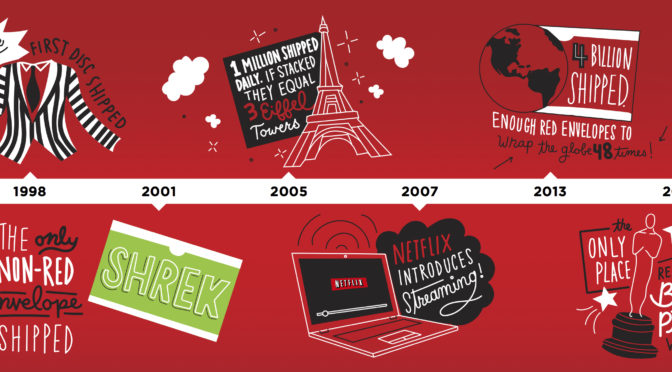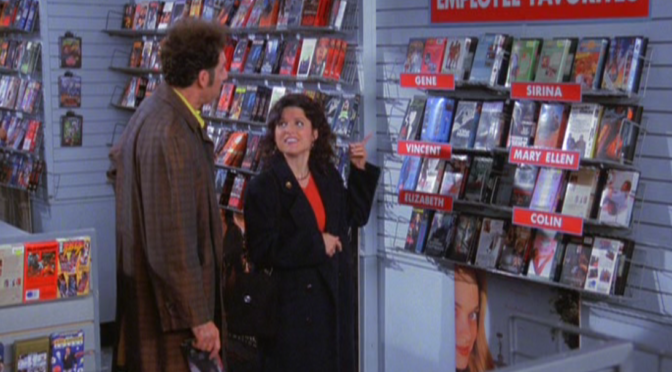(originally published on Inside the Envelope)
Only on DVD: Part 7
Continued from Part 1 / Part 2 / Part 3 / Part 4 / Part 5 / Part 6
We’ve all heard by now that DVD Netflix will stop sending little red envelopes this fall. When I announced it on the Cinema Shame podcast, I mentioned – that with very few exceptions – this means that most of us (99.9% of us?) no longer have rental access to physical media. As someone who grew up during the video store era, this realization leaves me grappling with an cinexistential crisis. This current generation of budding cinephiles will never browse a rental shelf. Spare me the argument that this is progress. Not all progress benefits us.
My local video stores provided a huge portion of my film education. They directed my path of discovery based on the catalog titles they’d chosen to stock on their shelves. We VHS kids had some magazines and film books to direct our attention, but when we wanted to rent a movie we often just walked into the video store blindly, reaching our hands out into the darkness just to see what we could find.
Even without DVD Netflix, that experience didn’t exist anymore. Although we have more movies available to us at the click of a mouse, that blessing is also a curse. How does anyone stumble into a new favorite movie? If you’re watching something new in 2023, it’s because you probably went searching for a specific title or cast/crew member. Some exceptions remain – like browsing the cobwebbed corners of Prime Video or Tubi, but you’re still at the mercy of the app’s search returns, unpredictable video quality, and “you might also like” algorithms. That’s going in blind, but with someone you don’t know handing you random titles that you’re definitely absolutely going love because you watched Pitch Perfect 2 that one time in 2017.
It’s not the same. There’s a negligible sense of discovery and zero adventure. Spare me the eyerolls and nostalgia gasps. A Friday trip to the video store was the pinnacle of my average week as a pre-teen stuck in rural Michigan. What’s the modern day equivalent? There isn’t one. I don’t meant to suggest that we’ve become a passionless society, but maybe we’ve become a passionless society. In the absence of obstacle, what need does passion even serve?
Faux outrage and virtue signaling is not passion.
You could argue, of course, that video store shelves were less efficient, that they didn’t bother to narrow down their offerings to focus your search. That, however, was the beauty of the experience. Each store had its own personality, its own clerks stocking employee recommendations. I grew up in a tiny farm community. We had two bars, two convenience stores, and two video stores serving roughly 2,000 people. In my head, the rental stores were called “the one with CEDs” and “the one without CEDs.” (Yes, indeed, one of my stores stocked Capacitance Electronic Discs, aka RCA Videodiscs and I’ll let you guess which one went out of business first. That said, it had more to do with their commitment to extraordinarily high late fees.)
The point is that, unintentionally or not, each store had a share in developing my cinematic perspective. Through one I had access to the future of home video technology (a format that is now a super geeky go-to punchline), surely fueling my entry into the next big thing – Laserdiscs – and for a minimum-wage teenager with limited liquid assets, I got pretty hot and heavy with the magic of those vinyl-sized flippers. Just say it with me VHS generation… and say it extra sexy…
…original… aspect… ratio.
Through the other location, I found classic movies. I remember plucking It’s a Mad, Mad, Mad, Mad World (1963) from the shelf because of the size of the two-VHS box with the shiny gold MGM banner across the top. At the time I didn’t know Sid Caesar from Sid Vicious. There wasn’t an algorithm in this universe that would have put that epic, madcap comedy in front of my face based on my habit of watching Batman (1989) over and over and over again.
I’m waxing nostalgic not to dwell on what we’ve lost as a moviewatching culture because we do enough of that already, but to consider how we move forward with what we’ve got left. Our movie rental stores have all become banks and pharmacies (cue Joni Mitchell), but that doesn’t mean we’re left without opportunity for the arbitrary fate of offline, algorithm-less discovery.
Take a trip to your favorite second-hand bookstore or thrift shop just to see what’s in stock. There’s bound to be some title that takes you by surprise. Survey the VHS tapes, the DVDs – and take one home with you. Two if you’re feeling daring. There’s no reason we can’t “keep circulating the tapes” (to borrow an old Mystery Science Theater 3000 phrase) on our own. Give the movie a watch. Maybe you’ll want to add them to your collection. Maybe you won’t, but that doesn’t matter! It’s about the act, the adventure. If it’s not a keeper, you’ll have the opportunity to put it back into circulation via a redistribution service like SwapADVD.com or eBay.
So, while there’s still time, dive into the abyss that is the nether regions of the DVD Netflix catalog and then watch through that queue. (Show us your conquests on the socials with #GetThroughMyQueue.) After that? Well, there are video stores all around us, if we just take the time to blindly wander into the semi-dark.














